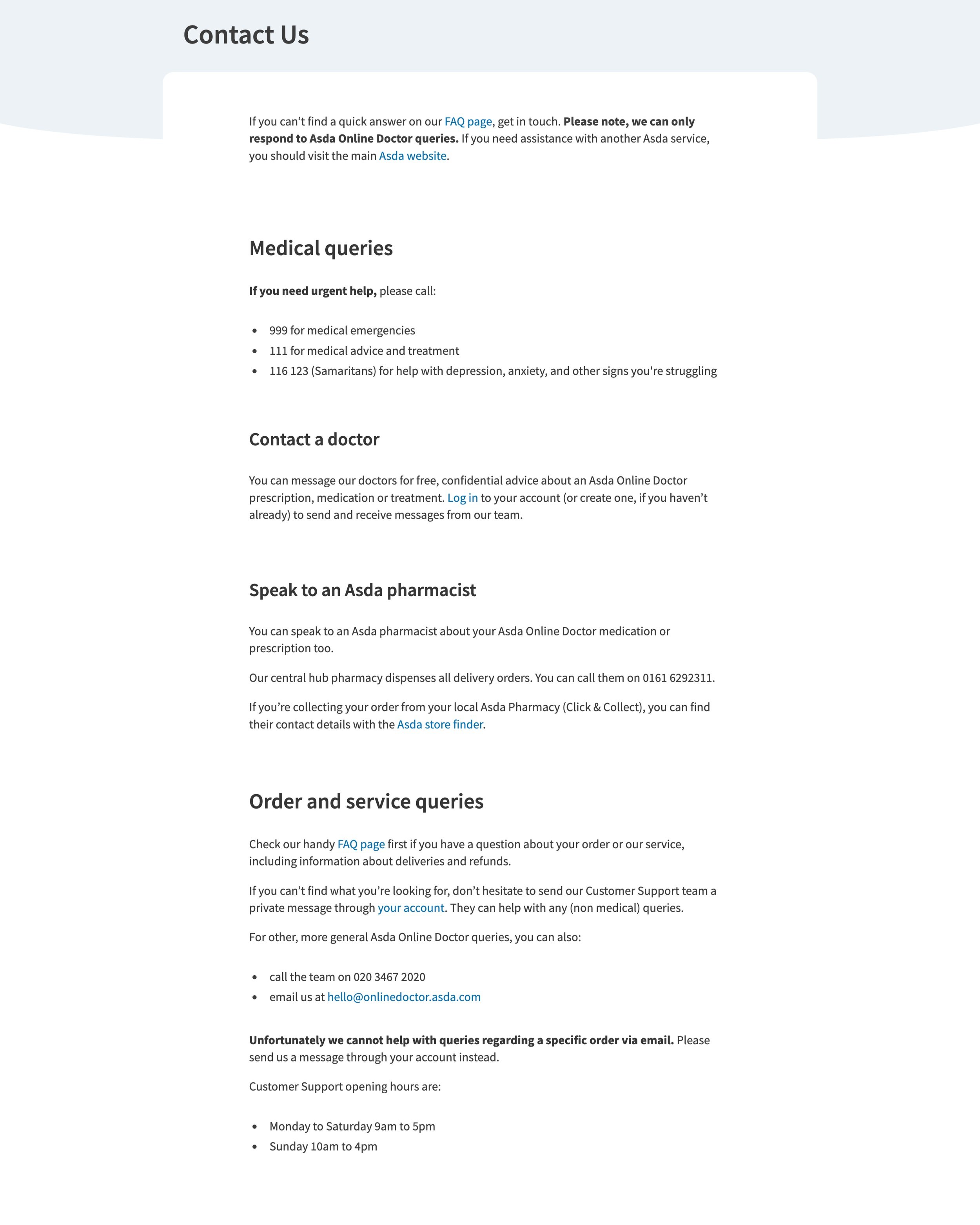‘Contact us’ page
Asda Online Doctor
Introduction
Asda Online Doctor (AOD) is an asynchronous online service that lets users request prescription medications online without visiting a doctor in person.
The problem
The Customer Support (CS) team was receiving high volumes of user queries on a weekly basis. Their feedback was that a significant proportion of these were irrelevant, unnecessary, or submitted through the wrong channels. As a result, managing these quickly and effectively was an operational challenge.
Read more about the problem and what I learned, below (‘Actions’).
Why was this important?
As a new service in an emerging field (digital healthcare) with many competitors, providing a top tier patient experience is essential for growth - especially when it comes to users trying new services or returning to use repeat services like contraception. It was agreed that Customer Support played an important role here, especially during busy periods like Christmas or for urgent services like emergency contraception.
Previously, ZAVA’s self-branded service had seen an influx of negative Trustpilot reviews - a key trust signal for new users - regarding poor customer service. There was a fear that this would happen again here for Asda Online Doctor.
Hypothesis
By optimising the ‘Contact us’ page around users’ needs, we could reduce the volume of queries received, help users resolve their issue more efficiently and improve their experience.
Actions
I spoke to the Head of the CS team to understand the problem in more detail including specific trends and the sort of queries coming through.
I learned that many queries:
were about topics we already covered on the website (e.g. FAQ guides)
were about topics that the team could not help with in the first place (e.g. general Asda queries unrelated to the Online Doctor service)
were sent through the wrong channels (e.g. users must send order-related queries through their account for data privacy reasons rather than email or call about these)
should be sent to other teams or departments to handle
I supplemented this with incoming user feedback (via Hotjar).
With this insight and a revised user story and acceptance criteria, I rewrote the ‘Contact us’ page.
This involved:
restructuring the page by query type instead of by team since users wouldn’t necessarily know who to contact
adding more information about the sort of queries that specific teams could or could not help with examples of popular queries
condensing long, repetitive content and using formatting (headings, bold text) to help users find information quickly - especially emergency medical advice
signposting existing resources or adding new journeys to empower users to find a quick answer here before getting in touch
You can see these changes and the original page, below.
Results
Following our changes, the CS team reported a noticeable drop in queries as a whole*. This included fewer unrelated or irrelevant queries, or queries sent through the wrong channels. New user traffic and other key metrics remained stable so we could be confident that our work made a difference here.
We also observed a small uplift in journeys to our FAQ page and the main Asda website, which we added as part of our changes. This indicated that users were engaging with this content and validated our decision to signpost these more clearly.
* Unfortunately the CS team were unable to provide robust query data due to technical limitations. This meant we could not clearly illustrate the impact of our work. In lieu of this, we looked at the Contact Us page’s user satisfaction score (via Hotjar) before and after the changes although no significant improvement could be seen for this.
View the live ‘Contact us’ page.

